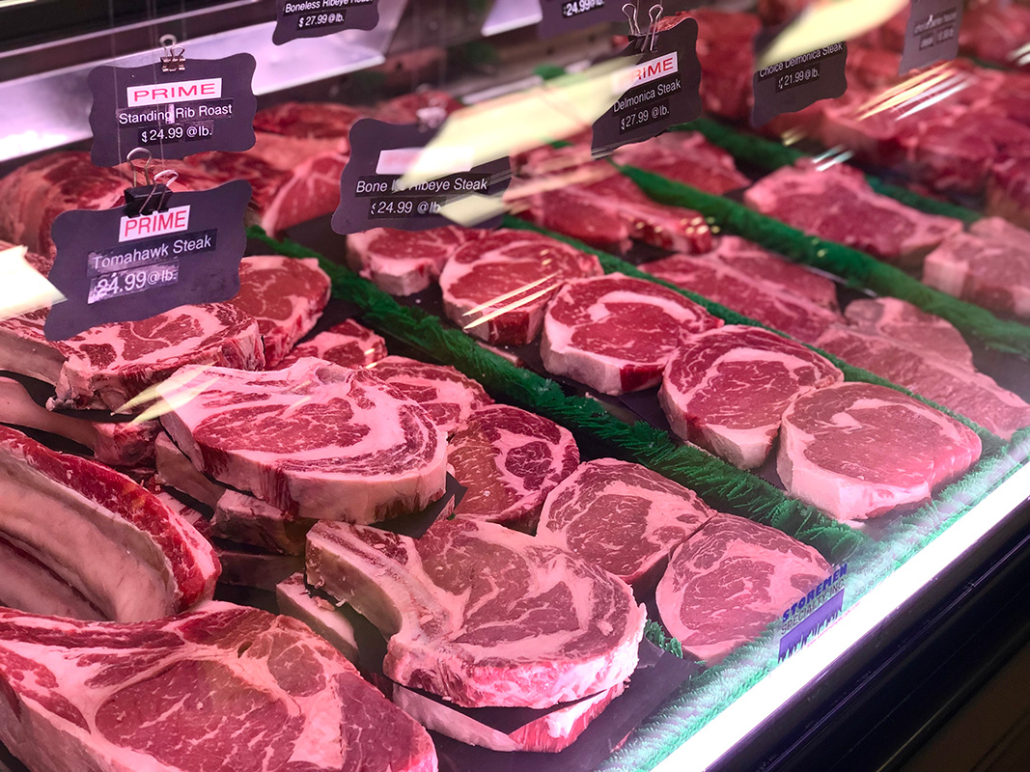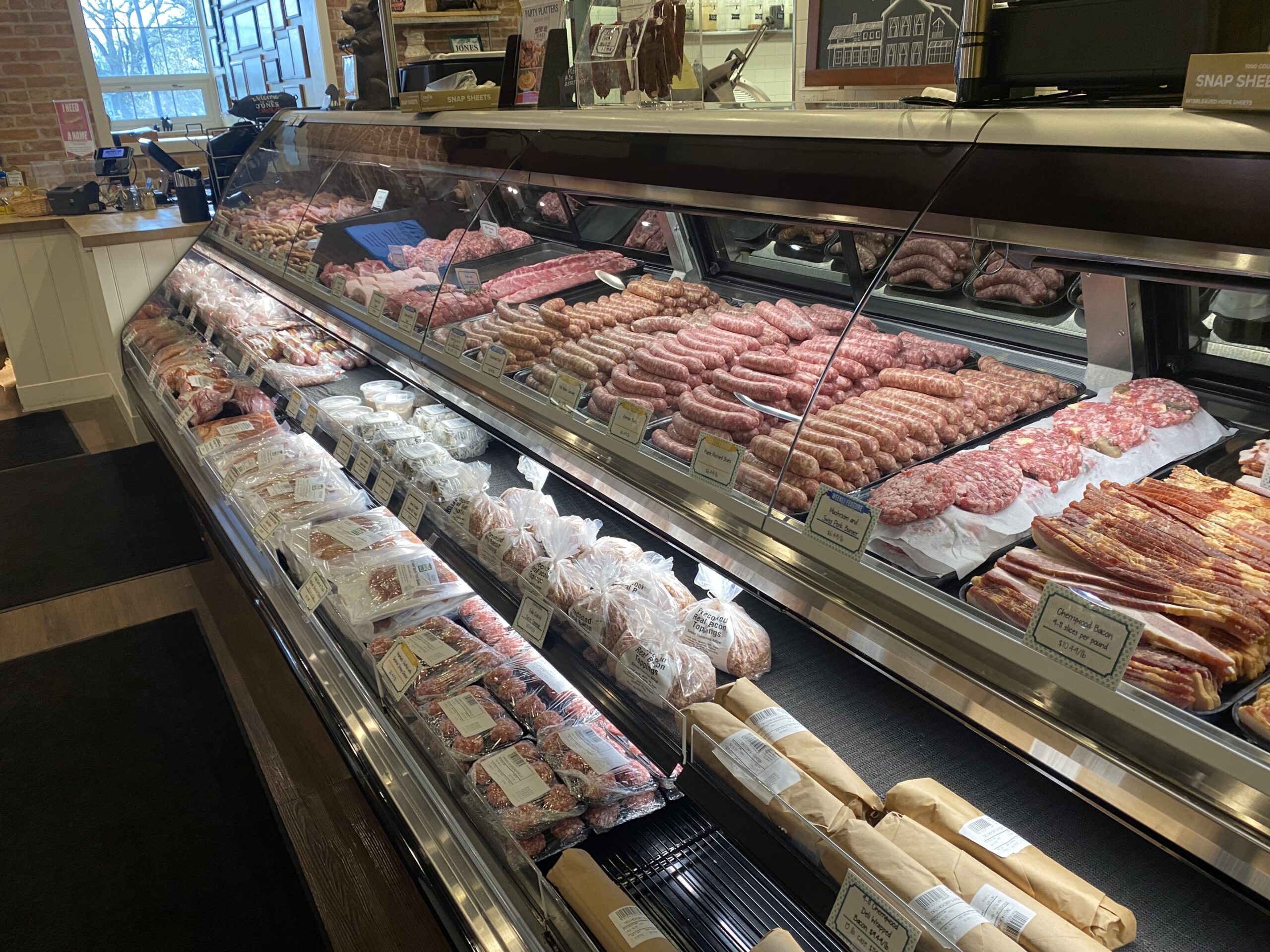Uncover the Art of the Butcher's Cut in a Modern Meat Market
In the ever-evolving landscape of modern-day meat markets, the butcher's cut has actually transcended its typical roots, merging old-time workmanship with contemporary practices. Today's butchers are not merely processors of meat; they are knowledgeable craftsmens that stress sustainability and ethical sourcing. Their proficiency in picking and preparing cuts customized to details culinary demands uses an unrivaled eating experience. What absolutely establishes the contemporary butcher apart is their capacity to build a much deeper link in between consumers and the origins of their meat. Just how do these masters balance tradition with advancement, and what implications does this have for the future of meat usage?
Evolution of Butchery Techniques
The development of butchery methods reflects an abundant tapestry of technology and adaptation driven by innovations in innovation, modifications in customer demand, and a much deeper understanding of meat science. Historically, butchery was a craft gave through generations, with approaches honed over centuries to maximize return and flavor. However, the industrial transformation ushered in mechanization, changing conventional methods and enabling massive handling.
The mid-20th century saw butchery techniques further improved by clinical insights into muscle biology and meat aging, enhancing both tenderness and taste. Technologies like vacuum cleaner packaging and refrigeration extended item shelf-life, permitting butchers to diversify offerings and enhance quality control. This period additionally marked the surge of specialized devices, such as band saws and meat slicers, which increased accuracy and performance in meat processing.

Electronic systems now help in monitoring animal provenance and optimizing cuts to fulfill certain client choices. Furthermore, a revival in artisanal butchery has actually arised, blending traditional skills with contemporary expertise to cater to customers looking for moral and sustainable meat choices.
Recognizing Meat Cuts
Recognizing the complexities of meat cuts is essential for both butchers and consumers looking for top quality and worth. For butchers, exact cuts mirror skill and regard for the craft, ensuring marginal waste and optimal return.

Comprehending muscle mass structure is critical; muscular tissues utilized more frequently by the pet tend to be tougher and are best matched for slow-moving food preparation techniques, while less-used muscle mass, like those found in the loin, are a lot more tender and perfect navigate to this site for barbecuing or roasting. Experience with these distinctions encourages consumers to make informed options, boosting their cooking undertakings.
Choosing Top Quality Meat
Choosing the best meat includes more than just selecting a visually enticing piece from the screen. The art of choosing top quality meat needs a discerning eye and expertise of details characteristics that signify freshness and excellence.
Second of all, take into consideration the marbling, which refers to the white streaks of fat within the muscular tissue. Correct marbling is a key indicator of inflammation and taste, as it melts during cooking, enhancing the meat's juiciness. Keep in mind, higher marbling usually associates with exceptional top quality cuts, such as USDA Prime.
Structure is an additional crucial factor; meat should feel solid to the touch, not slimed or overly soft. In addition, be mindful of the fragrance. Fresh meat ought to have a tidy, neutral smell, devoid of any kind of sour or off-putting smells.
Coupling Cuts With Food Preparation Approaches

Conversely, harder cuts like brisket and chuck roast are abundant in collagen, which damages down into jelly when prepared gradually. These cuts are excellent for braising or slow-moving roasting, enabling the meat to soften with time and develop deep, intricate flavors. Cuts such as short ribs and pork shoulder make out well with slow-cooking methods, where extended cooking times transform their durable structures right into succulent meals.
Lamb shanks and oxtail, which call for prolonged cooking to soften, are perfect candidates for stewing or sluggish simmering. These techniques coax out abundant, hearty flavors while maintaining moisture. By understanding the distinct attributes of each cut, cooks and home cooks i thought about this alike can elevate their culinary productions, guaranteeing each meal is both satisfying and memorable.
The Butcher's Role Today
Navigating the advancing landscape of the contemporary meat market, the butcher's role today expands past mere prep work of cuts. Contemporary butchers are culinary artisans, instructors, and supporters for lasting methods. They bridge the void between the ranch and the fork by making sure ethical sourcing, recognizing animal husbandry, and prioritizing openness in the supply chain. This shift mirrors the growing customer demand for quality over quantity, where provenance and pet welfare are critical.
In enhancement to crafting accurate cuts, butchers currently engage directly with consumers, providing cooking suggestions and tailoring choices to suit private needs and preferences. Their official site competence in meat aging, marbling, and flavor profiles equips consumers to make educated choices, enhancing their cooking experiences. This personalized service exhibits the butcher's advancing role as a relied on expert in the kitchen.
Furthermore, butchers are crucial in reducing waste, making use of entire animals to create diverse products such as sausages and supplies. This thorough approach not only appreciates the pet yet also aligns with contemporary sustainability goals. In this means, the modern-day butcher embodies both tradition and development, adapting to an ever-changing market while maintaining the virtuosity and integrity of their craft.
Conclusion
The contemporary butcher's craft elaborately weaves standard strategies with modern-day technologies, emphasizing lasting practices and ethical sourcing. Mastery in understanding diverse meat cuts and high quality signs equips butchers to supply enlightened referrals, aligning certain cuts with ideal food preparation techniques. This experience not just raises culinary experiences however also strengthens the connection between customers and the origins of their food. By recognizing historic techniques while accepting contemporary demands, the butcher's duty stays crucial in today's advanced meat market (bagley farms meat market edwardsville il).
Comments on “Discover Fresh Cuts at Bagley Farms Meat Market Edwardsville IL for Your Following BBQ”